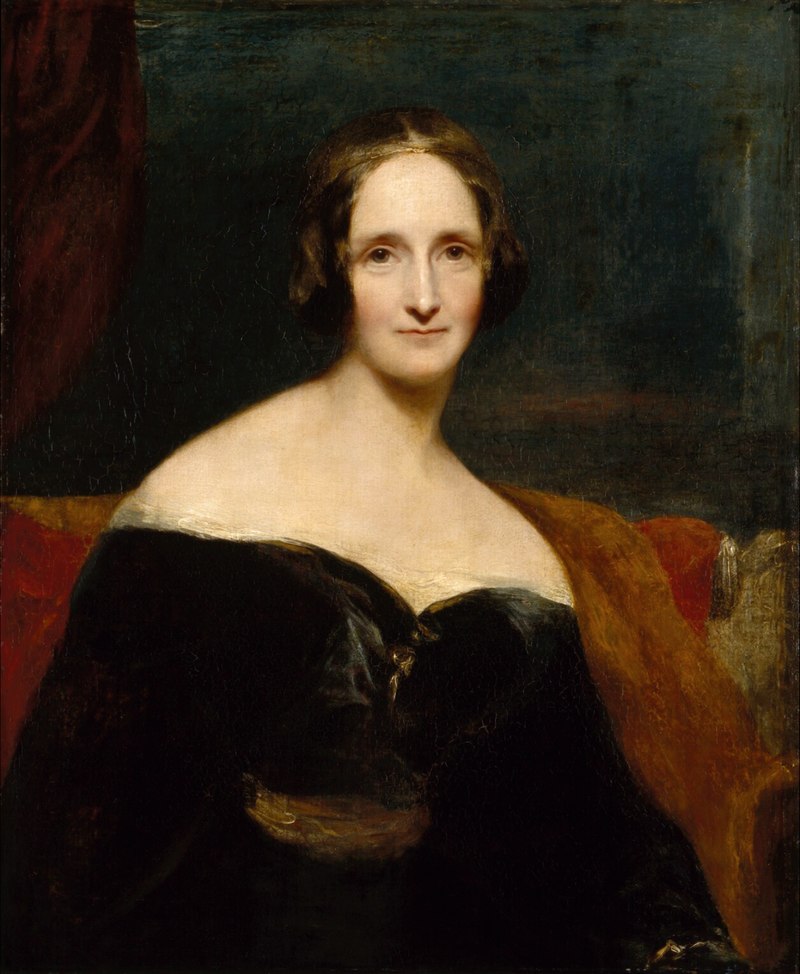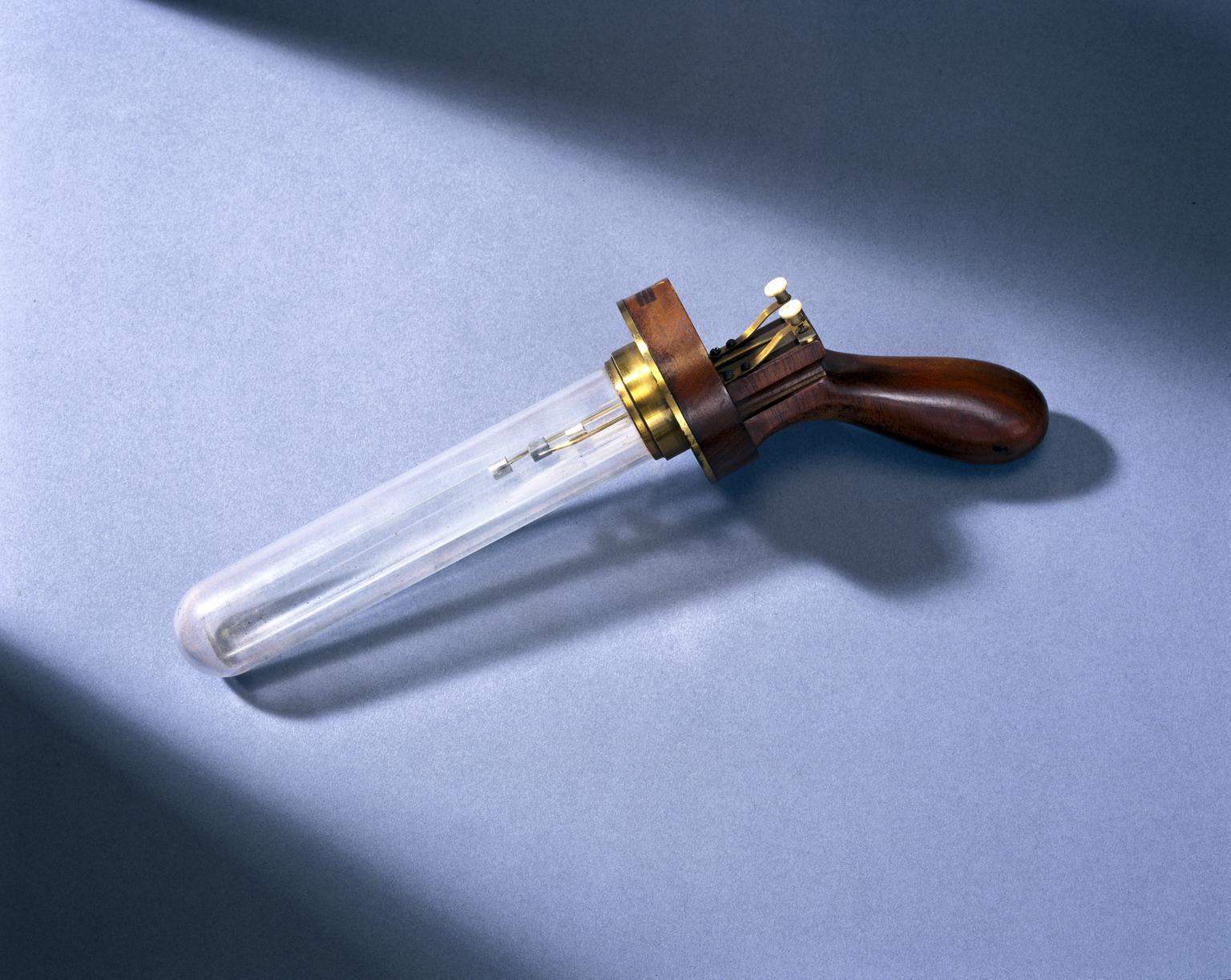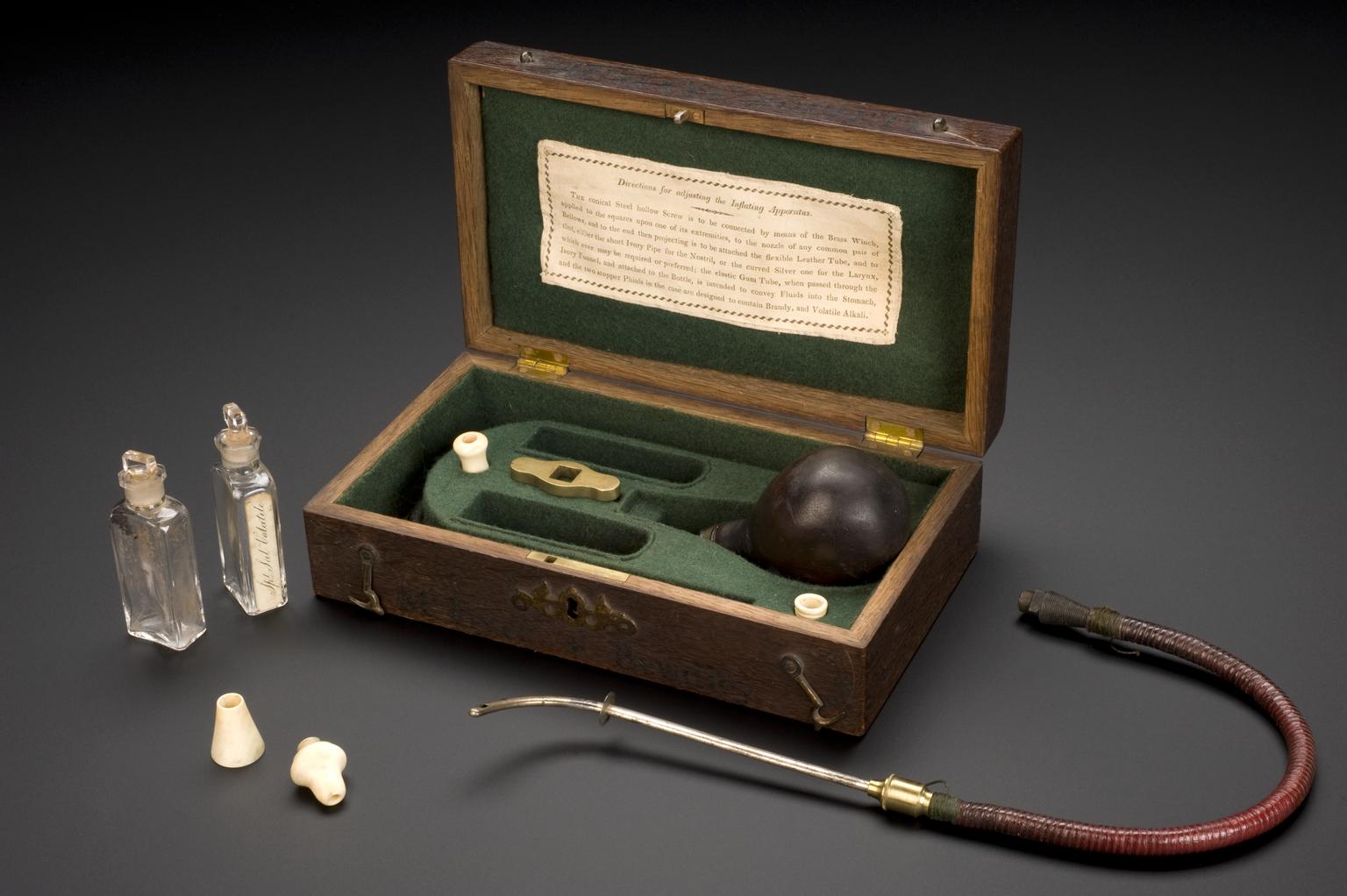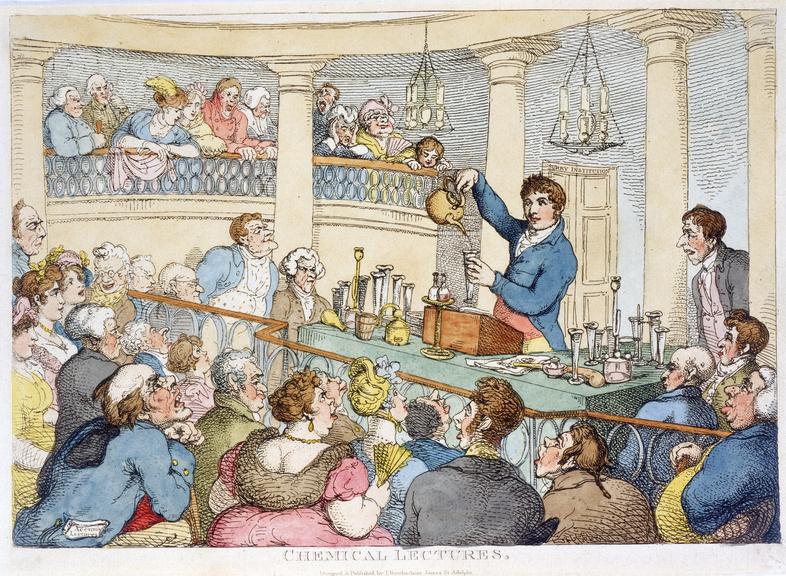At just 18 years old, Mary Wollstonecraft Shelley created one of the earliest and most iconic examples of science fiction in her novel, Frankenstein, or The Modern Prometheus, published in 1818. The novel tells the story of Victor Frankenstein, who became obsessed with science and at university tried to create the perfect being from body parts. When he ‘infuses a spark of being’ into the creature however, he is disgusted by it and flees. The creature is left to try to make sense of the world; feeling betrayed by its creator, it seeks revenge on Frankenstein.
Shelley famously brought Frankenstein to life while abroad with friends. In June 1816, she and her husband Percy Shelley stayed with Lord Byron and his physician John Polidori at the Villa Diodati near Lake Geneva. It was a ‘wet, ungenial summer’ according to Mary, with long, unusually dark days. Unbeknownst to Byron and his party, the unseasonable weather over this ‘Year without a Summer’ was caused by the eruption of Mount Tambora in Indonesia the previous year, causing a significant change in the global climate.

Sat around the fire, Byron proposed that each of the party should write a ghost story. Shelley later recounted in her 1831 introduction to Frankenstein how one evening, the group discussed the boundaries of life and death, that ‘[p]erhaps a corpse would be re-animated, galvanism had given token of such things’. When they retired to bed, she recalls having a ‘waking dream’:
‘I saw the pale student of unhallowed arts kneeling beside the thing he had put together. I saw the hideous phantasm of a man stretched out, and then, on the working of some powerful engine, show signs of life, and stir with an uneasy, half vital motion.’
Galvanism
Daughter of pioneering feminist Mary Wollstonecraft and radical philosopher William Godwin, Mary Shelley grew up surrounded by the leading scientists, writers and politicians of the 18th Century. She took a keen interest in science, reading widely and attending lectures on the cutting-edge scientific theories of the day. During this period, debates were raging about the boundaries between life and death, and whether such matters should be probed in the first place.
Shelley was aware of the debates taking place about the so called ‘life-principle’ between William Abernethy and William Lawrence at the Royal College of Surgeons about the origins of the human life force. Abernethy argued that life was a kind of vital ‘spark’ which was ‘superadded’ to the material body to animate it: a body that powers up once the ‘spark’ is added, like a clock starting to tick after it’s been wound-up. In contrast, Lawrence argued that life was within the body itself, produced simply through its functioning parts: part of the same whole, trying to extricate life and the body is like extracting egg from a baked cake.
Linked to this debate was the newly discovered force of electricity – and experiments to test whether it could bring the dead to life. Luigi Galvani, a surgeon at the University of Bologna, was experimenting with animals and electricity when in January 1781, he dissected a frog near a static electricity machine and touched a scalpel to the frog’s leg, which jerked. After further experiments Galvani was convinced that the muscle tissues had spasmed due to contact with the electrical current. Galvani didn’t announce his discovery until 1791 when he published an essay entitled De Viribus Electricitatis in Motu Musculari Commentarius (Commentary on the Effect of Electricity on Muscular Motion). This essay argued that animal tissue contained an inherent force which was a form of electricity that flowed through the nerves to muscle tissue, Galvani named this force ‘animal electricity’.

To demonstrate the stimulation of nerves in a frog’s leg, this Pistolet, or `Frog Pistol’ was devised by electro-physiologist Emil Heinrich du Bois-Reymond. Du Bois-Reymond’s book Investigations of Animal Electricity laid out his theory of bioelectricity: muscle was made up of electric molecules. We now know that these are sodium, potassium and other ions.
Galvani’s nephew, Giovanni Aldini, took these experiments further by animating human corpses with electricity. He toured Europe with these demonstrations; the most famous of these displays of galvanism took place at the infamous Newgate Prison in London in 1803. Until 1832, it was illegal to procure human cadavers for dissection except from the bodies of executed murderers, making Aldini’s use of executed criminals at Newgate the only legal route for his public experiments.
Aldini inserted metal rods into the corpse of George Foster. The Newgate Calendar recounts that ‘the jaws of the deceased criminal began to quiver, and the adjoining muscles were horribly contorted, and one eye was actually opened. In the subsequent part of the process the right hand was raised and clenched, and the legs and thighs were set in motion.’ The experiment created a public sensation, with widespread reporting in newspapers such as The Times. People thought that this was the start of technology that might be able to bring the dead fully back to life, a shocking and troubling concept. This was indeed the closest men of science had come to bringing the dead back to life and it had a lasting impact on Mary Shelley who appears to depict electricity as the ‘spark of being’ that Frankenstein uses to bring the creature to life.
The Royal Humane Society and resuscitation

Mary Shelley’s mother, Mary Wollstonecraft, died from a post-natal infection a few days after giving birth to her. This would prompt Shelley’s enduring fascination with motherhood, birth and death which is central to Frankenstein. She was also aware that her mother was resuscitated after jumping into the Thames in 1795 by volunteers from The Royal Humane Society. The society was established by two doctors, William Hawes and Thomas Cogan in 1774 and was originally named the Society for the Recovery of Persons Apparently Drowned.
It published information on how to resuscitate people with specially designed equipment which pumped air into the lungs and awarded medals to those who had attempted resuscitation engraved with the society’s motto ‘Peradventure a little spark may yet lie hid’
This apparatus for resuscitating the drowned is from the Worcestershire branch of the Humane Society and is similar to the one which may have been used to revive Mary Wollstonecraft. It contains equipment for forcing air into the lungs via a leather balloon and tubing. It also includes three stopper phials which contained brandy and a volatile alkali, presumably to act as stimulants.
Shelley took inspiration for Victor Frankenstein from a friend of her father’s, Humphrey Davy, a famous chemist who had carried out pioneering experimental work on electricity. Davy’s lectures were famous and hundreds of people, including many women, would cram into lecture theatres to see him speak and demonstrate experiments.

This etching shows a young Humphry Davy giving a lecture and demonstrating chemical experiments at the Surrey Institution in London. Mary Shelley attended lectures such as these in both London and Bath- she went on to borrow some of the phrases verbatim from Davy’s lectures and book to use in her novel.
In 1802 Davy wrote Discourse, Introductory to Course of Letters on Chemistry which Shelley read before writing Frankenstein. Chemistry, writes Davy, has bestowed on humankind,
‘powers which may be almost called creative, which have enabled him to modify and change the beings surrounding him, and by his experiments to interrogate nature with power, not simply as a scholar, passive and seeking only to understand her operations, but rather as a master, active with his own instruments.’
These words also reflect Frankenstein’s desire to use science to actively alter and ‘master’ nature.
But in pursuing the creation of the ‘ideal’ being, and selecting ‘his features as beautiful’, he is appalled by the ‘monstrosity’ of his creation. Frankenstein overreaches in his scientific endeavours, taking on a role of creator which many of Shelley’s contemporaries believed was reserved for God only.
Frankenstein has become a reference point whenever science intercedes with the processes of nature. For example, Robert Edwards, a pioneer of in vitro fertilisation from the 1960s said in 1989 that ‘Whatever today’s embryologists may do, Frankenstein or Faust or Jekyll will have foreshadowed, looming over every biological debate’. When he and his colleagues initially reported they had successfully fertilised a human egg in a laboratory, the New York Times report ran under the headline ‘The Frankenstein myth becomes reality’.
‘In scientific pursuit there is continual food for discovery and wonder’ – Mary shelley in Frankenstein
Frankenstein endures because it incorporates so many aspects of what it means to be human and to be alive. It explores the fundamental questions of a period of rapid scientific and societal change, and questions of scientific ethics, which seem more pertinent than ever with the rise of Artificial Intelligence, gene-editing technology and human-made environmental destruction.
In the two centuries since Frankenstein was published, the creature has often been depicted as monstrous and stupid, but that is not how Shelley originally portrays it. Hers is a sensitive, emotional and intelligent being, made murderous by inhumane rejection and abandonment: ‘I was benevolent and good; misery made me a fiend. Make me happy, and I shall again be virtuous.’
Today, we should remember Mary Shelley’s most prescient message: our innovations are only as virtuous or as evil as we make them.